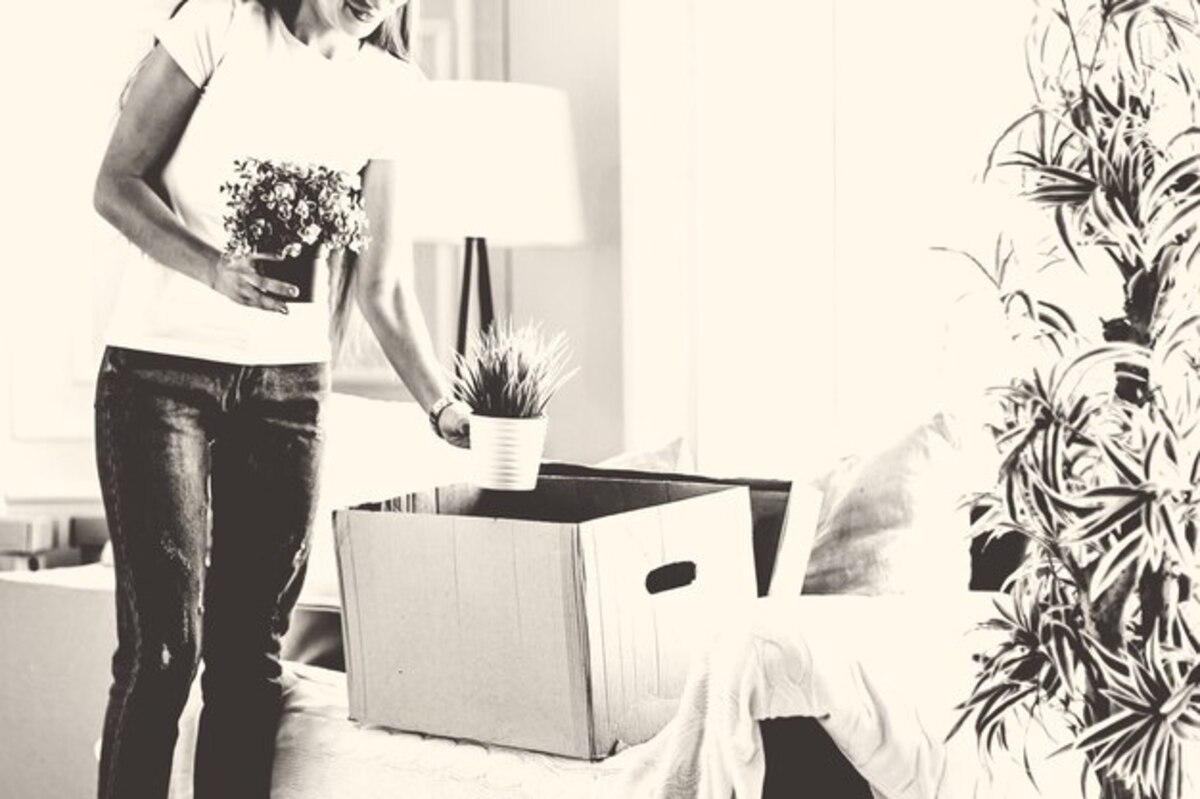How to use the move to boost your personal minimalism

Taking advantage of a move can be the perfect opportunity to take a big step towards personal minimalism. Instead of simply relocating your belongings from one place to another, you can evaluate each item and decide what truly deserves a space in your new home. This process will not only help you reduce clutter but will also make the work of the moving services easier by making your move more efficient. Discover how to turn this change into a liberating and enriching experience.
1. The minimalist mindset: why is it important before moving?
The minimalist mindset is an approach that invites you to question the necessity of each object in your life. Before moving, it is crucial to adopt this perspective, as it allows you to evaluate your belongings not only in terms of their utility but also of their emotional and functional value. This process of reflection can be revealing; often we cling to things that no longer represent who we are or that simply take up space without adding value to our daily life. By developing a minimalist mindset, you will be able to make more conscious decisions about what you truly want to take with you to your new home.
Furthermore, this mindset promotes detachment and emotional freedom by freeing you from the burden of excess. When you decide to let go of the unnecessary, you are not only simplifying your physical environment but also your mental state. Moving thus becomes an opportunity to restart and create a space that better reflects your current priorities and lifestyle. Embracing minimalism before your move can transform a stressful task into a positive and enriching experience that allows you to establish a lighter and more meaningful new beginning.
2. Evaluation of your belongings: what will stay and what will go?
Evaluating your belongings is a crucial step on your journey toward personal minimalism. When facing each object, ask yourself: Do I really need it? Does it bring me happiness or value in my life? This process involves not only a physical review but also an emotional one. Many of us tend to cling to items for memories or the idea that they might be useful in the future. However, when moving, you have the opportunity to free yourself from that emotional burden and make space for what truly matters. Take some time to reflect on each item and consider whether it really contributes to the quality of your life.
Additionally, sorting your belongings can be a revealing exercise that helps you identify patterns in your consumption habits. You can create categories such as "keep," "donate," and "discard." The items you choose to keep should be those you use regularly or that hold special meaning for you. On the other hand, the items in the other categories can find a new life in the hands of others or simply free up physical and mental space in your new home. At the end of the day, this assessment will allow you to not only simplify your environment but also align it with your personal values and goals, making your transition to a minimalist lifestyle easier.
3. How to categorize items: the three boxes of minimalism
To facilitate the sorting of your items during the move, you can use the minimalist three-box approach: "Keep," "Donate," and "Discard." Start by creating a designated space where you can work comfortably. As you review each item, ask yourself if you truly use it or if it holds special significance for you. If you decide that something has value and you want to keep it, place it in the "Keep" box. This is the perfect time to reflect on your needs and desires, ensuring that you only take with you what truly adds to your life.
The second box is for items you believe can have a new life in someone else's hands: the "Donate" box. Here you can include clothes you no longer wear, duplicate kitchen utensils, or anything that is in good condition but that you do not need. Consider donating to local organizations or even to friends and family. Finally, there is the "Discard" box, reserved for those broken or irreparable items that have no use or value. By the end of this process, you will have gotten rid of the excess and will be ready to enjoy a lighter and more harmonious home, aligned with your minimalist style.
4. Advantages of hiring efficient transportation services
Hiring efficient transportation services during a move not only optimizes the logistical process but also greatly contributes to your goal of personal minimalism. By delegating the task of transporting your belongings to professionals, you can focus on what really matters: deciding which items to keep and which to let go. This allows you to approach the move with a clearer and more focused mindset, facilitating the selection process and reducing the anxiety that often accompanies these changes. Additionally, experienced transportation services have the tools and techniques necessary to handle your belongings with care, ensuring they arrive at their new destination in perfect condition.
Another key benefit of hiring an efficient transportation service is the saving of time and effort. Moving can be exhausting, especially if you try to do everything on your own. A professional team can handle the loading and unloading in a significantly shorter time than it would take to do it individually, which is particularly valuable when you're trying to simplify your life. By reducing the time spent on the logistics of the move, you have more space to reflect on your decisions regarding your belongings and engage in the emotional process of leaving behind a familiar place. In this way, you ensure not only a faster move but also a more conscious transition to a minimalist lifestyle.
5. Strategies to sell or donate what you no longer need
A move is the perfect time to reflect on what you really need and what you can let go. To facilitate this process, consider implementing effective strategies to sell or donate items you no longer use. An excellent option is to organize a garage sale; it will not only allow you to get rid of items in good condition, but you can also earn some extra income. Make sure to promote the event through social media and community groups to maximize visibility and attract more buyers.
If you prefer a more altruistic option, donating can be a rewarding alternative. Research local organizations that accept donations and check what types of items they need. Often, shelters, foster homes, and food banks look for gently used clothing, furniture, and household items. Not only will you be making space in your new home, but you will also positively contribute to your community by helping those in need. Additionally, remember that each donated item represents a shared story; by giving your belongings a second life, you are connecting them with new people and experiences.
6. The importance of organizing properly in the new house
Properly organizing your new home is a fundamental step in consolidating the minimalism you have begun to practice during the move. Upon arriving in an empty space, you have the opportunity to design an environment that reflects your values and lifestyle, rather than simply placing things as they were before. Every decision about where to place objects should be guided by their functionality and personal meaning. This not only contributes to creating a more harmonious home but also helps you establish organizational habits that will last over time. Furthermore, good organization from the beginning can prevent future clutter accumulation. By assigning a specific place for each item and ensuring that everything has its reason for being in your home, you reduce the temptation to acquire unnecessary new things. The visual and mental clarity provided by a well-organized space translates into a sense of peace and well-being. Thus, each time you enter your new home, you will be able to enjoy a lighter and more pleasant environment, thereby facilitating your path toward a lasting minimalist lifestyle.
7. Techniques to maintain minimalism after the move
Maintaining minimalism after the move requires a continuous commitment to simplicity and organization. Once you have settled into your new home, it is essential to establish habits that help you avoid the accumulation of unnecessary items. An effective technique is to implement the "one in, one out" principle, where for every new acquisition, you commit to getting rid of at least one item. This not only keeps your space clear but also helps you reflect on what you truly value in your daily life. Additionally, designating a specific space for new items can help you better visualize what you bring into your home and why.
Another useful strategy is to conduct periodic reviews of your belongings. Take time every six months or a year to assess your spaces and evaluate whether the objects are still useful or meaningful to you. Ask yourself if you have used each item during that time; if you haven’t, consider its removal. Maintaining a critical mindset towards your possessions prevents clutter from accumulating and reinforces your commitment to minimalism. As you become accustomed to this process, it can become a natural and liberating practice that allows you to enjoy a clearer and more serene environment in your new home.
8. Inspiring testimonials: success stories in minimalism after a move
Minimalism after a move can be a path full of inspiration and personal transformation. Many people have shared their stories about how this process allowed them not only to get rid of unnecessary items but also to discover a new, more conscious and fulfilling lifestyle. For example, a woman who decided to move to a smaller house found in the process the perfect opportunity to reflect on what she truly valued. By donating most of her belongings, she realized that her happiness did not depend on accumulating things but on the experiences lived and the relationships built. This revelation not only changed her home but also her outlook on life.
Another inspiring testimony comes from a couple who, after an international move, committed to adopting minimalism as a fundamental part of their daily lives. Faced with the challenge of reducing their belongings to the essentials to adapt to a new country and culture, they not only managed to simplify their physical environment but also found greater mental and emotional clarity. This change allowed them to focus on what truly matters: enjoying the present and creating memories together. Their stories are living proof that taking advantage of a move to embrace minimalism can lead to an enriching journey towards personal freedom and authenticity.



